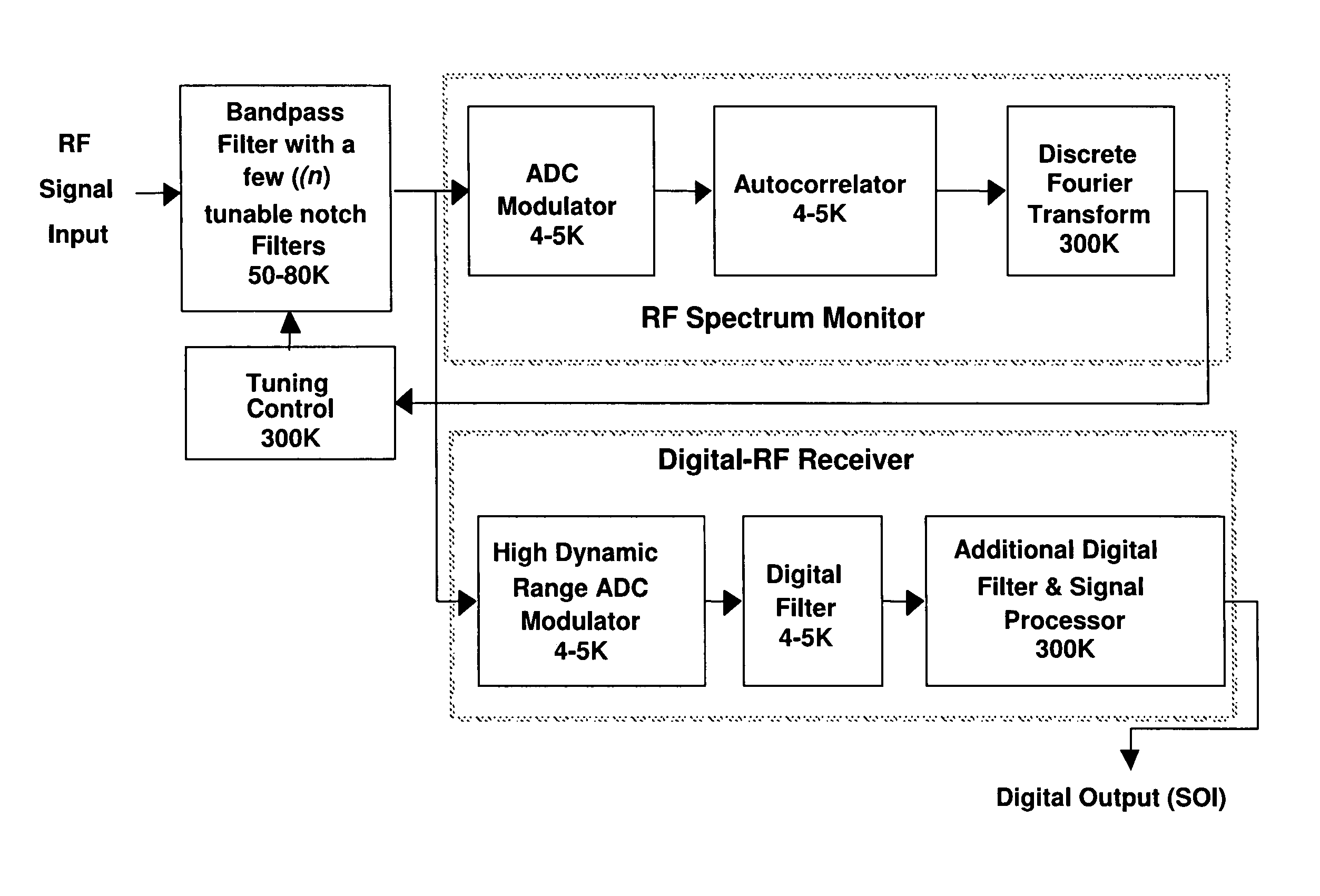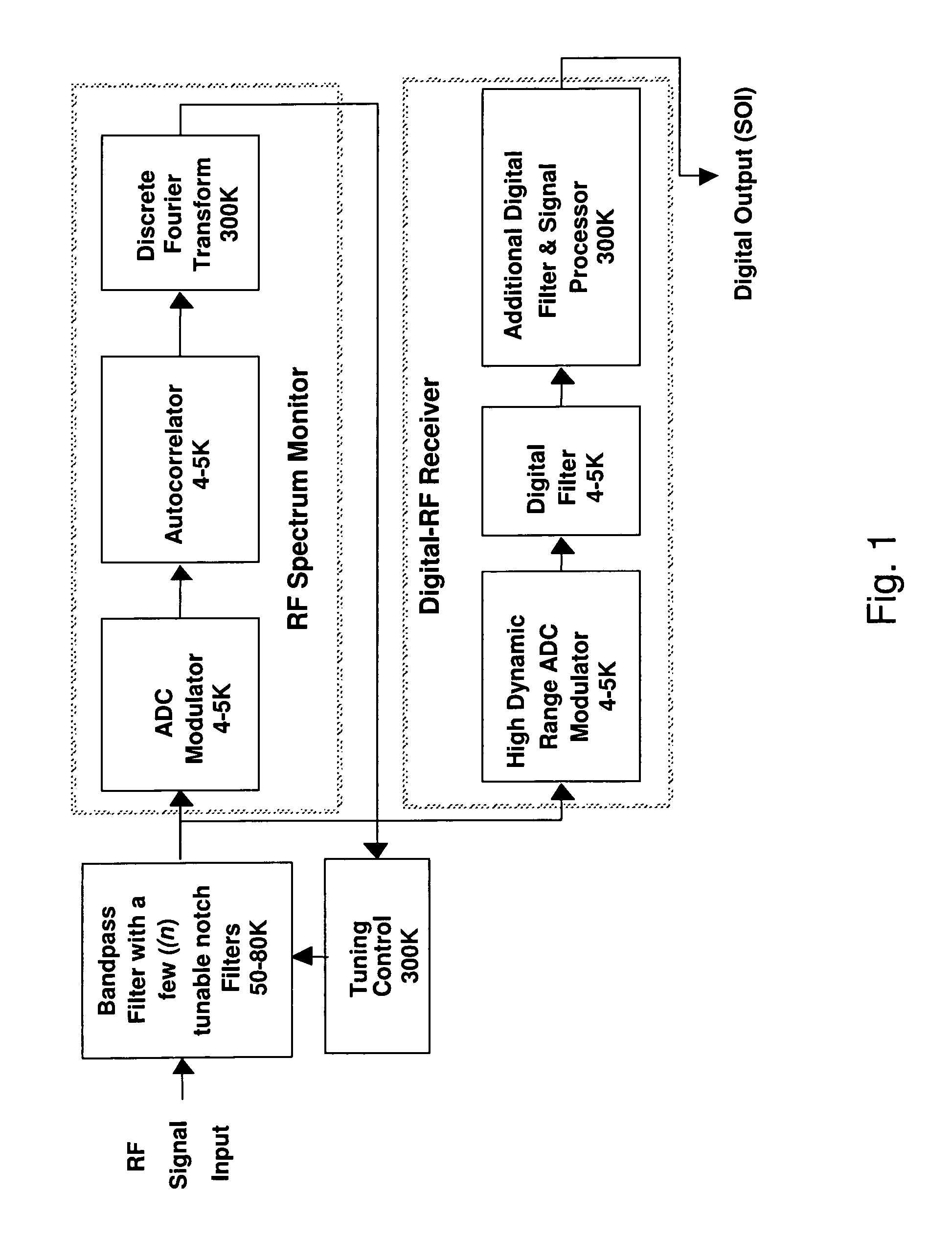Wideband digital spectrometer
a digital spectrometer and wideband technology, applied in the direction of transmission, electrical equipment, etc., can solve the problems of increasing crowded rf spectrum, and achieve the effect of reducing the required adc dynamic range for digitization and efficient residual processing
- Summary
- Abstract
- Description
- Claims
- Application Information
AI Technical Summary
Benefits of technology
Problems solved by technology
Method used
Image
Examples
Embodiment Construction
[0067]It is possible to quickly electrically tune (nanosecond response times) high-quality superconductor analog filters using Josephson junctions (JJs), to deliver steeply walled, >60 dB deep band reject filters, tunable by >30% of the center frequency of 8 GHz or elsewhere in the 4-10 GHz range. Room temperature normal metal filters lack the required quality factor (Q) for such sharpness. Superconductor filters have demonstrated desirable filter characteristics but tuning mechanisms to date are either too slow (mechanical) or introduce too much non-linearity (varactors). Even tuning with MEMS devices, the fastest tunable filters so far, is limited to several microseconds.
[0068]One embodiment according to the present invention provides the use of JJs as variable inductors, by controlling a DC bias current below its critical current (see FIGS. 3A, 3B and 3C). The JJs respond in picosecond time scales, and do not, by themselves, limit the speed of the analog filter implementation. Th...
PUM
 Login to View More
Login to View More Abstract
Description
Claims
Application Information
 Login to View More
Login to View More - R&D
- Intellectual Property
- Life Sciences
- Materials
- Tech Scout
- Unparalleled Data Quality
- Higher Quality Content
- 60% Fewer Hallucinations
Browse by: Latest US Patents, China's latest patents, Technical Efficacy Thesaurus, Application Domain, Technology Topic, Popular Technical Reports.
© 2025 PatSnap. All rights reserved.Legal|Privacy policy|Modern Slavery Act Transparency Statement|Sitemap|About US| Contact US: help@patsnap.com



